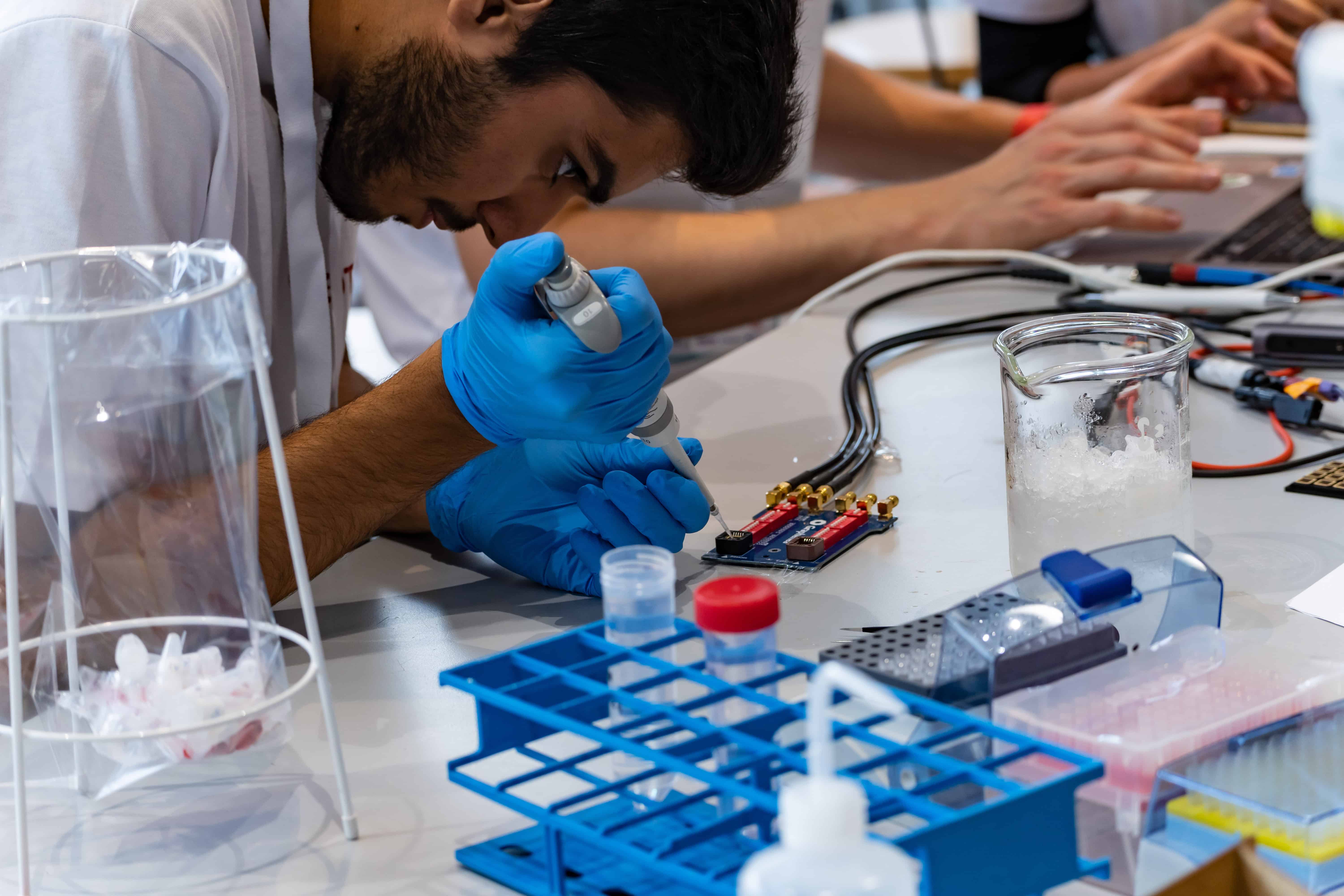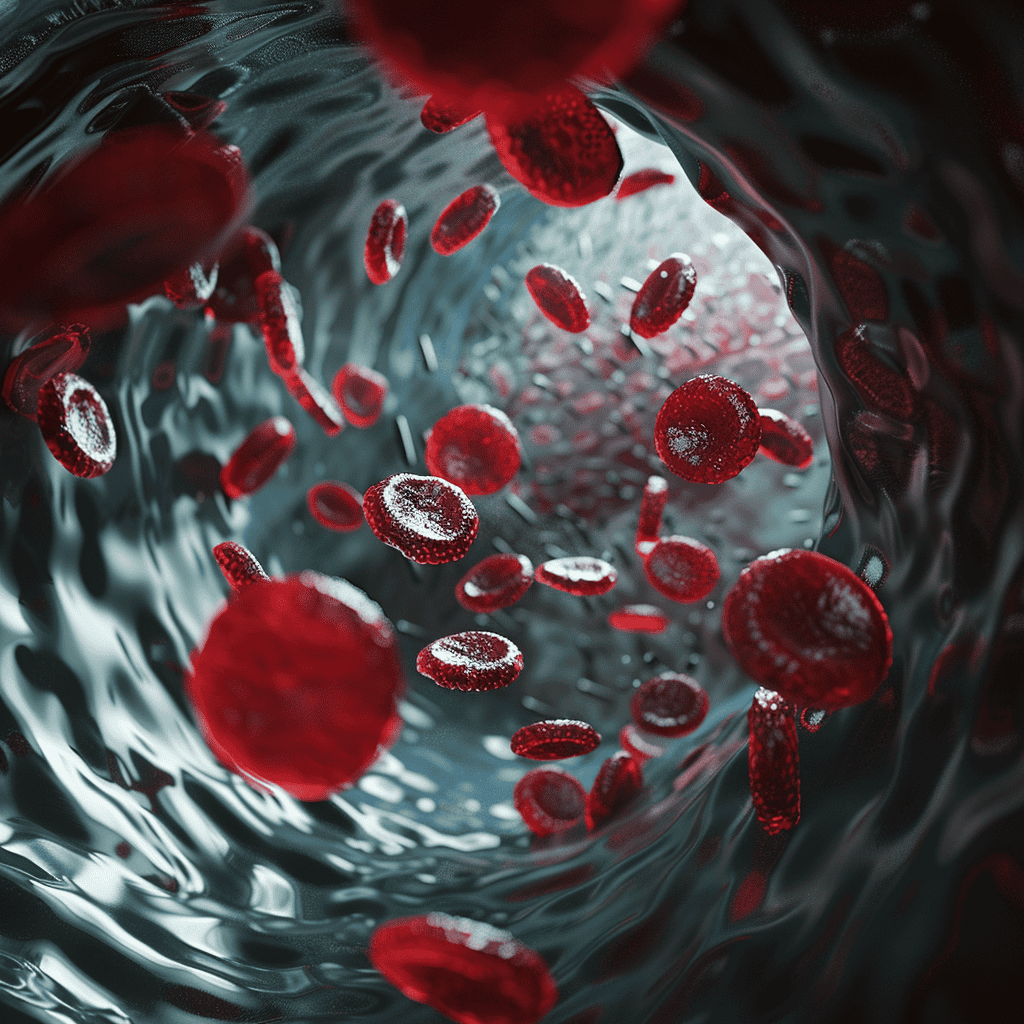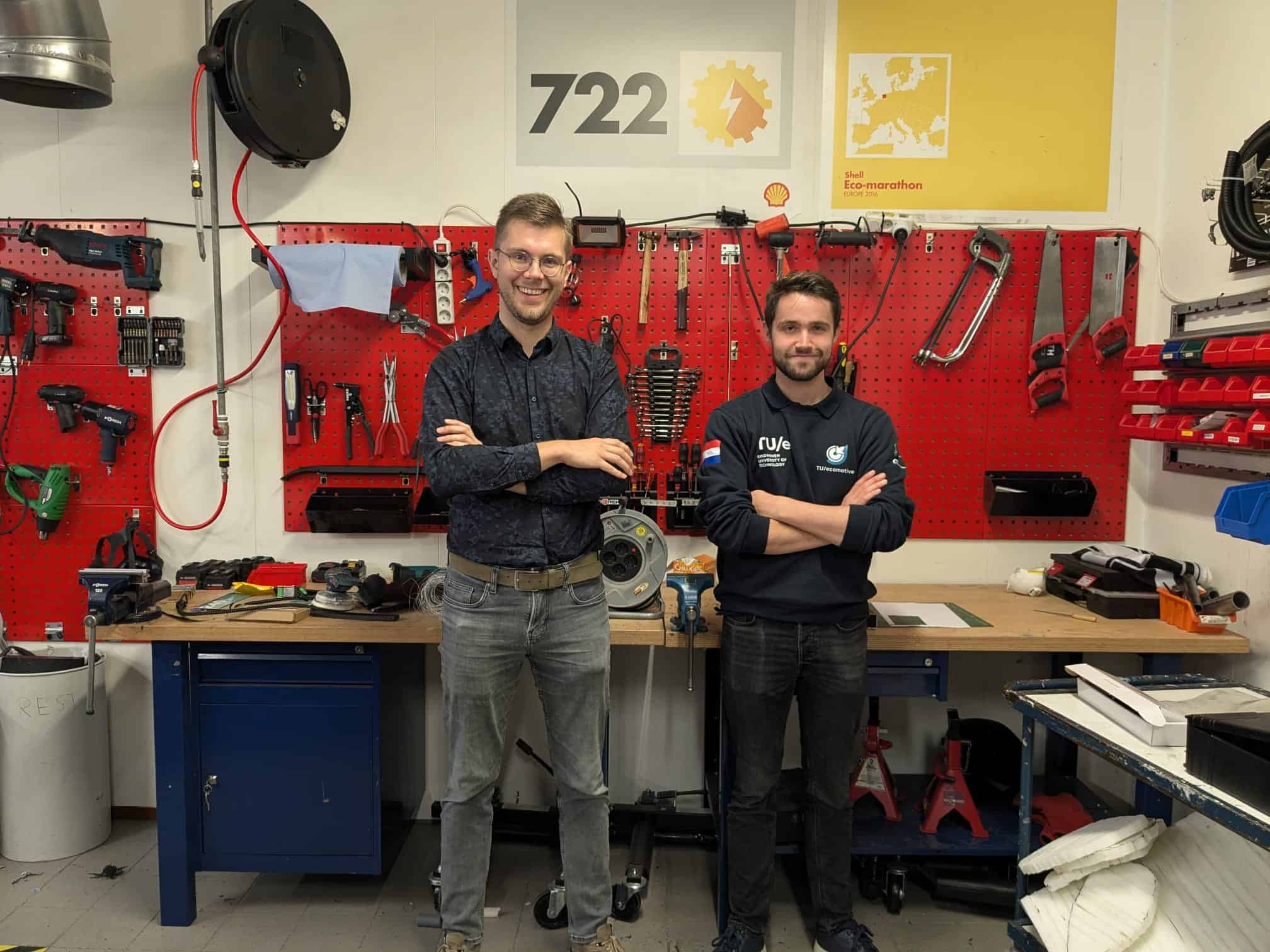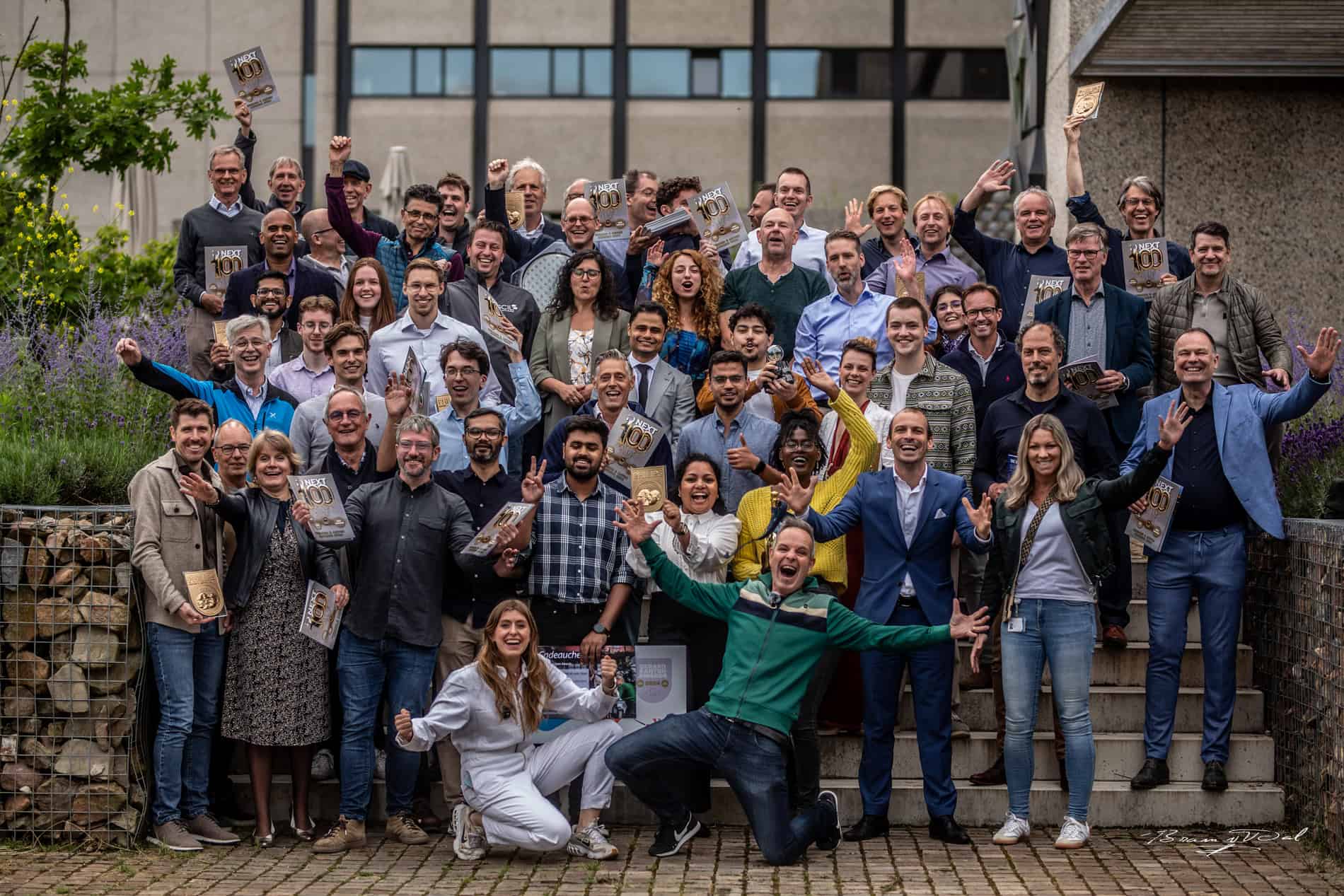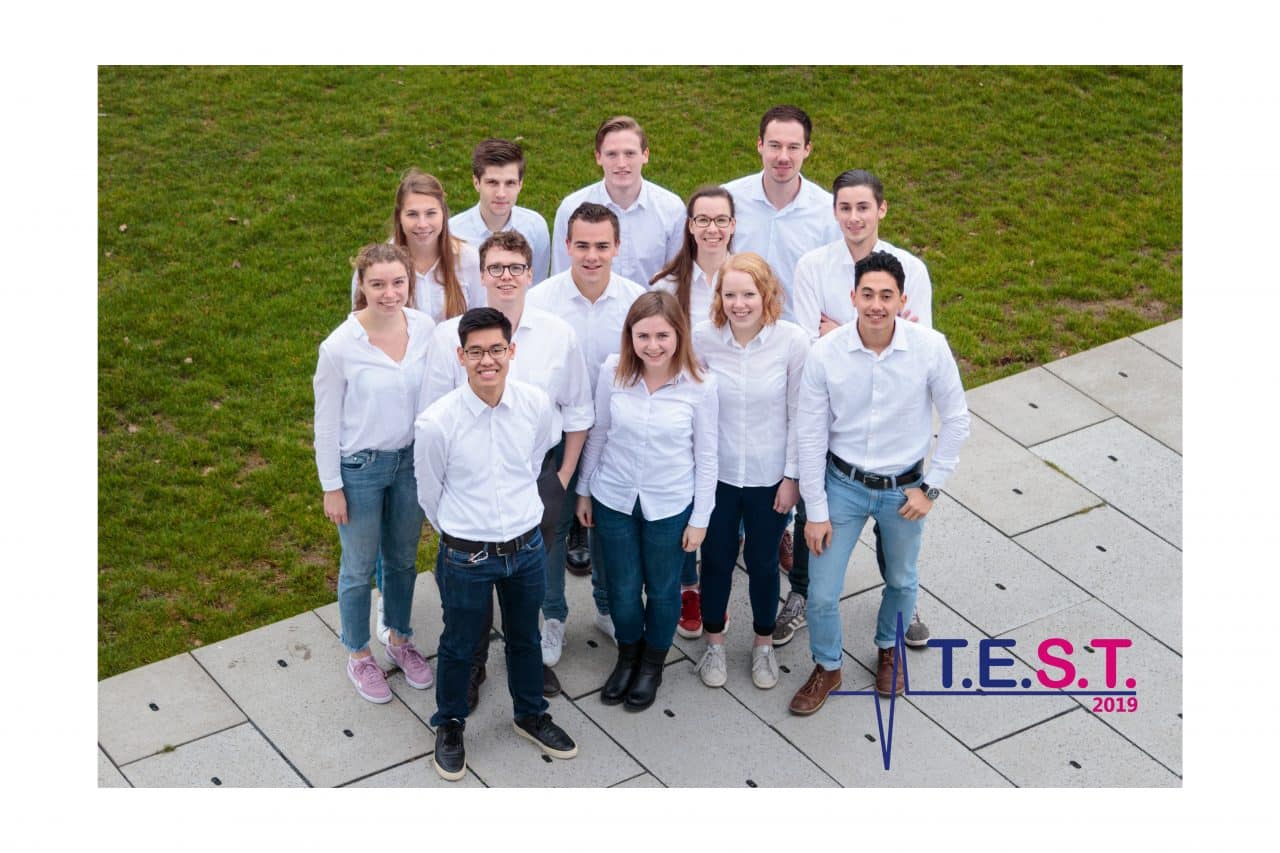
Tension is rising for the T.E.S.T. student team at Eindhoven University of Technology (TU/e). In the past year, they have been working on a biosensor that can measure the amount of rheumatism medication in a patient’s blood. They are now putting the finishing touches on everything. Towards the end of the week, they will be participating in SensUs 2019 -a competition in which fourteen student teams from all over the world participate in. All of them have their own biosensor for the same application: measuring rheumatism medication.
According to the team, a sensor that is able to measure the concentration of rheumatic medication in the blood is badly needed. “There are many people who use this medicine,” says Rody Mens, vice-chairperson of T.E.S.T. “Moreover, the dosage often has to be adjusted. There are periods when the patient is doing better or worse. This fluctuates fairly frequently.” In many cases, the concentration of medication in the blood is currently not being measured. If this does happen, the process is very slow. It takes weeks before a patient has a result. “Then you know what the concentration was back then, but that’s of little use to you now. In many cases the concentration of medication is not even measured, the student team states.
Fast and accurate
The students explain that too much of this medicine may lead to unpleasant side effects. This is because the immune system is suppressed by the drug. Insufficient medicine has no effect at all. “An exact dosage is therefore very important. A biosensor that is able to make quick measurements can therefore be a godsend for many patients.” And this does not only apply to rheumatoid arthritis patients. The commonly used drug for rheumatism, Adalimumab (Humira), is also regularly prescribed for other autoimmune diseases, such as Crohn’s disease.
The T.E.S.T. sensor measures the concentration of Adalimumab on the basis of changes in color. Mens explains: “We put the blood plasma together with specially developed proteins into a chip. The proteins, in this case also called enzymes, emit light in a specific color. On the basis of the intensity of the color, we are able to determine how much medicine there is in the blood.” Thanks to this fast and accurate measurements, each patient can be given a personalized dosage. “This allows the disease to be treated more effectively,” team member Max Bossink adds. In his opinion, this is a step forward compared to the current working method. “At the moment, there are only two dosage options for the medicine. This is simply not enough for all patients.”
Working together with a single goal
The team members have a clear goal in mind: Develop a technique that is easy to apply and that can improve the quality of life of rheumatoid arthritis patients, among others. In order to achieve this goal, they work in a structured manner. “At the beginning of the year, we established six teams, three technical and three in the field of management and organization, Mens explains. “Each team was made up of two smaller teams, one in the technical field and one in the executive field. Think, for example, of PR or sponsorship,” says Bossink. In this way, the students developed not only technical knowledge but also organizational skills. Team member Blijke Wessels: “In the beginning, the teams were a bit divided and everyone worked on their own sections. Now that the finishing line is in sight, we really are all working together. That’s great to see.”
More experience
Collaborating with students from other study programs was an important experience for Wessels during her time at T.E.S.T. “That sounds nice, but it is quite difficult to transfer knowledge that you take for granted to someone who does not know a lot about it,” she says. ” Besides that, it is also fun to put the knowledge that we have gained during this training into practice.”
This is something that other students are missing out on in their study program. Bossink: “The projects we do are usually just for a few weeks. I like to work on something on a long-term basis and eventually really bring out a new product,” says Bossink. Mens agrees. ” I’ve been in the laboratory a lot now as a second-year student. That’s the kind of experience that you usually don’t get until the end of your studies. On top of that, you also learn a lot from people who are in other years.”

The student team can often be found at TU/e innovation Space.. “We regularly use the meeting rooms and workspace,” says Mens. ” There are also several student teams here, so it’s nice to talk to them too. What’s more, it’s great that there are a lot of people who are able to answer questions.” The team members can also be found throughout the campus. “We use the laboratories in different buildings,” says Mens. “It’s nice to visit different locations this way.”
The long road to the market
We will see if this hard work will be rewarded this Friday during the SensUs 2019 final. “We want to win the competition,” says Wessels. The biosensor is now fully adjusted to the requirements of the competition. There are still several steps needed in order to actually bring the product onto the market. ” For the competition, we will be measuring the concentration of medicine in the blood plasma, which is only one component of the blood,” she explains. Bossink: “This is basically a prototype. If the sensor really comes on the market, it would be nice if it could just measure the concentration of medicine using the whole blood.” In the long run, the sensor could even be used by patients at home, just as it is for people with diabetes.
The team members are not sure yet if they will continue as a start-up after the competition. “The students want to finish their education first,” says Mens. He also believes that it is difficult to bring a medical product onto the market. This is subject to a lot of rules, which means that the road to the market takes even longer. Nevertheless, the team members hope that the technology will become accessible to many patients in the near future. “Maybe one of the other teams will continue working on their sensor,” he says. “Moreover, it is possible that we will be working with a company to further develop our technology. Then perhaps over time our method can also be used for other medicines.”
Would you like to be present at the SensUs Innovation Day on 30 August? Register here.



